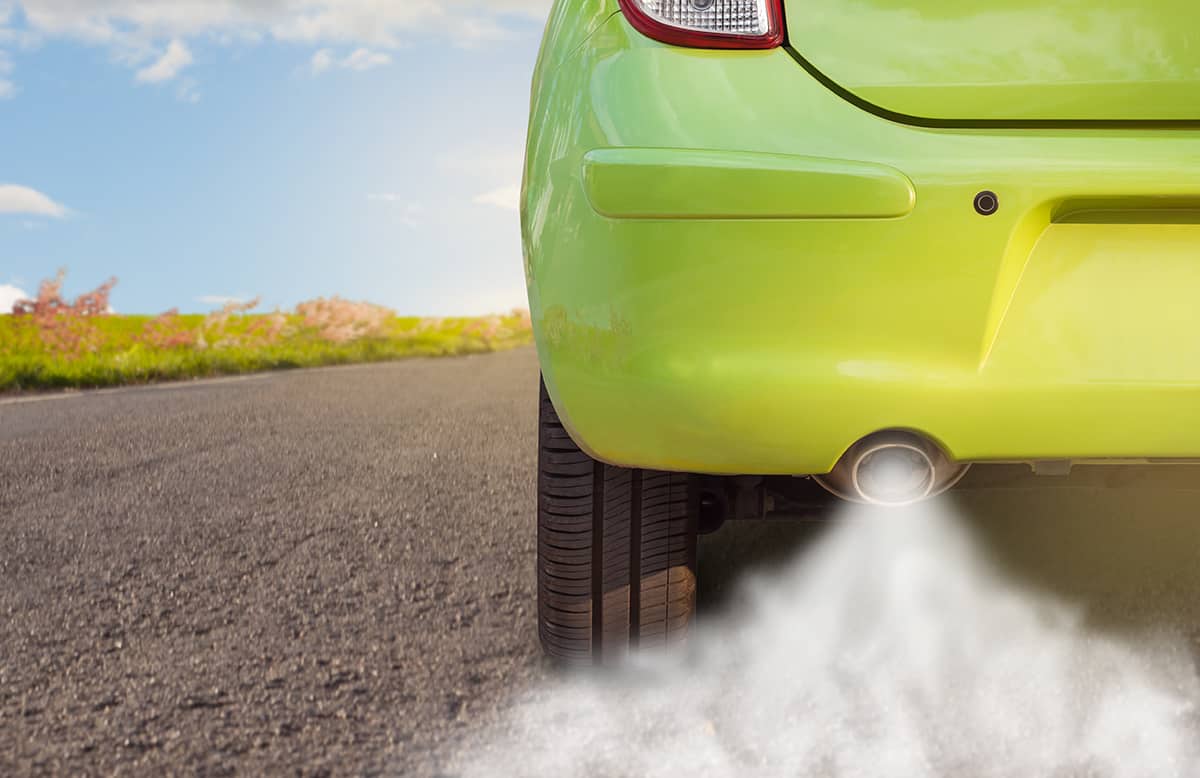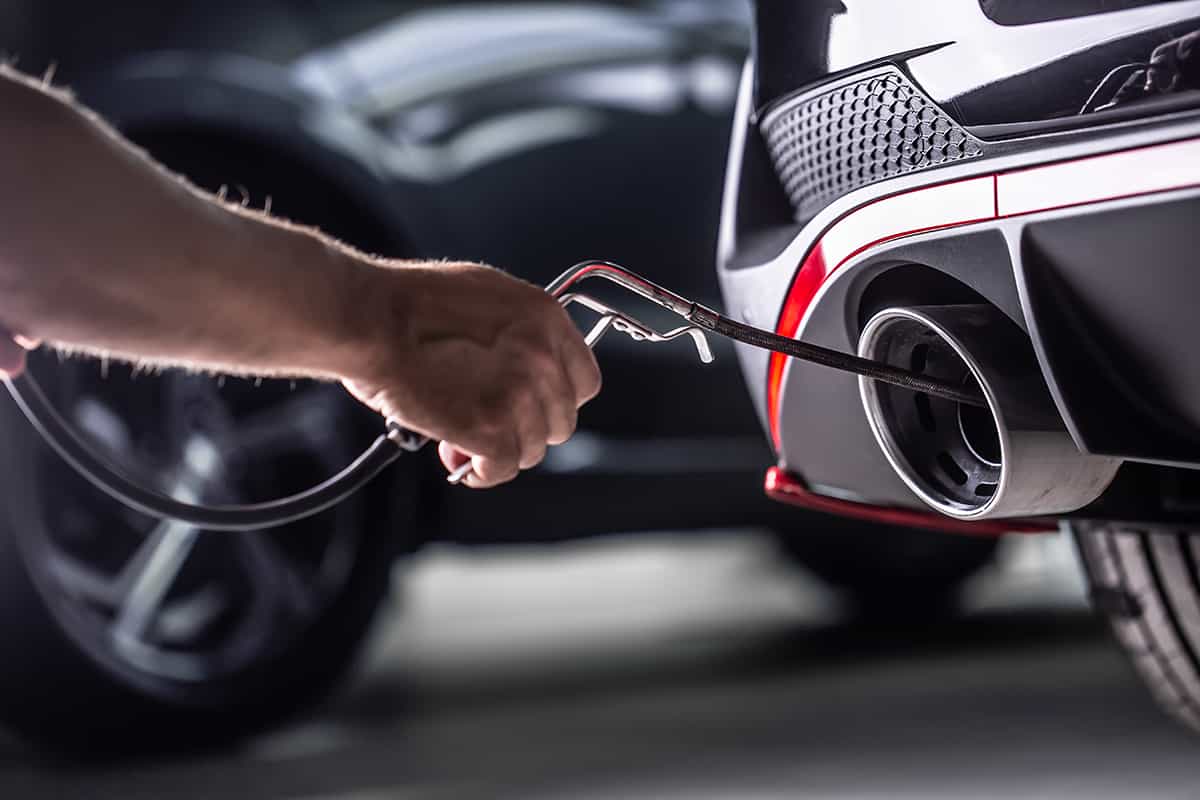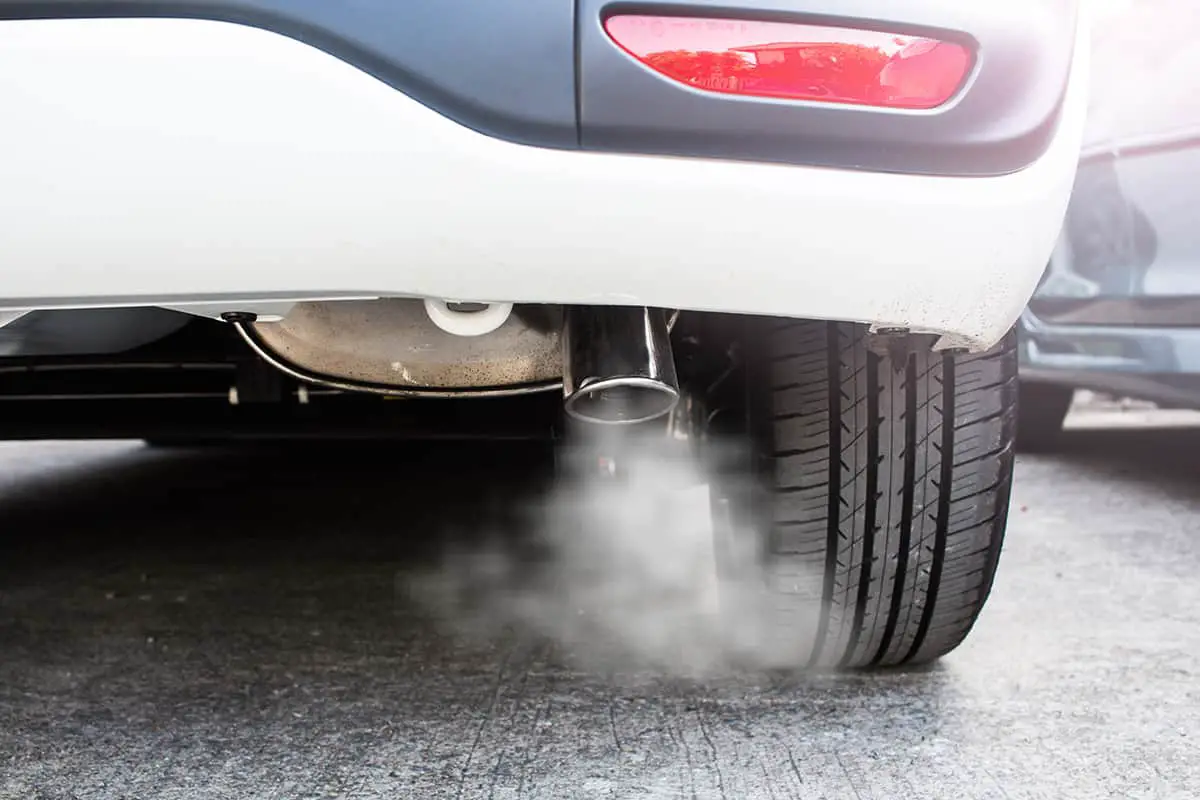When it comes to your vehicle, noticing white smoke from the exhaust pipe can be alarming. Is it a sign of impending trouble or simply a benign byproduct of the engine’s operation? Understanding the reasons for this occurrence can help you decipher these signals, possibly preventing serious problems down the road.
White smoke from your car’s exhaust is typically caused by the burning of coolant or transmission fluid inside the engine, often indicating a leak. Addressing this issue involves diagnosing the problem, potentially involving a mechanic, and taking appropriate steps to repair the leak.
In this article, we’ll look deeper into the various causes of white smoke emissions, how to diagnose these issues, and the steps you can take to fix them.
Why White Smoke from Exhaust Is a Cause for Concern
White smoke from your car’s exhaust can sometimes be benign, but often it’s a warning signal that something isn’t right. By understanding what causes this smoke and the potential issues it signifies, you can proactively deal with potential problems and avoid expensive repairs down the line.
Basic Structure and Function of an Automobile Exhaust System
Your vehicle’s exhaust system is designed to manage and dispose of byproducts produced by the engine’s internal combustion process. The exhaust system includes components like the manifold, oxygen sensors, catalytic converter, and the muffler. It’s crucial for reducing emissions, minimizing noise, and ensuring optimum fuel efficiency.
Why Does an Exhaust Emit Smoke?
As the engine burns the air-fuel mixture to power your vehicle, it produces exhaust gasses. Usually, these gasses are invisible, but under certain conditions, visible smoke is produced. Factors influencing this can include the quality and type of fuel used, engine temperature, and the presence of any foreign substances in the combustion chamber.
Explaining the White Color
White smoke from the exhaust typically happens when a foreign substance is being burned in the engine’s combustion chamber. In many cases, this foreign substance is a liquid, such as coolant or transmission fluid, that has leaked into the chamber. When these liquids are burned, they produce a white or light gray smoke that is then expelled through the exhaust.
Possible Causes of White Smoke from the Exhaust

White smoke emanating from your car’s exhaust pipe can be triggered by various issues, ranging from harmless to severe. Pinpointing the root cause can help you understand the seriousness of the situation and take necessary action.
1. Condensation
During colder seasons, it’s common to see white smoke from your car’s exhaust, especially during start-up. This is due to condensation. When your car’s engine is cold, it causes the exhaust gasses to condense and form steam, which appears as white smoke. Once your engine warms up, the condensation dissipates, and so does the smoke. No action is needed if condensation is the cause.
2. Coolant Leak
One of the most common causes of persistent white smoke is a coolant leak. If the head gasket, which separates the engine block from the cylinder head, is damaged, it can allow coolant to seep into the combustion chamber. When the coolant burns along with the fuel, it turns into white smoke. Symptoms include white smoke from the exhaust, a sweet smell, overheating, and a low coolant level.
3. Transmission Fluid Leak
If you’re experiencing white smoke along with trouble shifting gears, it could indicate a transmission fluid leak. In this scenario, the fluid is drawn into the engine via a vacuum hose connected to the transmission and subsequently burned, causing white smoke.
4. Blown Head Gasket
A blown head gasket is a significant issue that causes white smoke. When the head gasket fails, it allows coolant to leak into the combustion chamber, leading to overheating, coolant loss, and white smoke from the exhaust. Besides being an expensive repair, a blown head gasket can cause extensive engine damage if not dealt with promptly.
5. Cracked Engine Block
In the worst-case scenario, white smoke from the exhaust can indicate a cracked engine block or cylinder head. This condition allows coolant to leak into the combustion chamber and get burned, leading to white smoke. Symptoms include constant overheating, significant coolant loss, and white smoke from the exhaust.
Diagnosing the Issue
When your car starts emitting white smoke from the exhaust, accurately diagnosing the problem is the first step towards a solution.
Symptoms Related to White Smoke Emission
Identifying the issue causing white smoke involves monitoring for additional symptoms. Here are some key symptoms:
- Persistent White Smoke: If white smoke continues to pour out even after the engine has warmed up, it’s a sign of a possible internal issue.
- Sweet Smell: A sweet, syrupy smell accompanying the white smoke often indicates a coolant leak.
- Difficulty Shifting Gears: If you experience gear shifting problems alongside white smoke, a transmission fluid leak could be the culprit.
- Overheating Engine: An overheating engine coupled with white smoke might suggest problems like a blown head gasket or a cracked engine block.
Basic Troubleshooting Tips for Home Diagnostics
While complex issues require a professional’s touch, here are some steps you can take at home to better understand the problem:
- Check Fluid Levels: Regularly monitor your coolant and transmission fluid levels. If they’re consistently dropping, it’s a potential sign of a leak.
- Monitor Engine Temperature: Keep an eye on your engine temperature gauge. If it’s frequently high, it could indicate a coolant leak.
- Inspect for Leaks: Look for visible signs of leaks. Puddles of coolant or transmission fluid under your car are obvious signs of trouble.
Addressing the Problem

Once you’ve determined the cause of the white smoke from your exhaust, the next step is to address the problem. The course of action depends on the severity of the issue, ranging from simple fixes to professional repair work.
1. Fixing a Coolant Leak
A coolant leak often requires professional attention. It can originate from various places, including the head gasket, radiator, or water pump. A mechanic will typically perform a pressure test to locate the leak, and then repair or replace the faulty component.
2. Addressing a Transmission Fluid Leak
A transmission fluid leak is a severe problem that calls for immediate professional intervention. A mechanic will inspect the vacuum lines, seals, and gaskets associated with the transmission system. The faulty parts will then be replaced to prevent further fluid loss and potential transmission damage.
3. Repairing a Blown Head Gasket
A blown head gasket is a serious issue that requires professional repair. The mechanic will typically remove the cylinder head, replace the faulty gasket, and then reinstall everything. In some cases, the cylinder head may also need to be machined or replaced if it has been damaged.
4. Managing a Cracked Engine Block
A cracked engine block is a critical issue, often requiring an engine replacement. While some cracks can be repaired, it’s usually more cost-effective and reliable to replace the entire engine, especially if the vehicle is older.
FAQs
1. Can you drive safely with white smoke from the exhaust?
If the white smoke persists or is accompanied by other symptoms like overheating, a sweet smell, or difficulty shifting gears, it could indicate a severe issue like a coolant or transmission fluid leak, a blown head gasket, or even a cracked engine block. In such cases, it’s advisable not to drive the car to prevent further damage and ensure safety.
2. How much would it typically cost to repair a leaking coolant system?
The cost to repair a leaking coolant system varies depending on the cause and location of the leak. For minor repairs, such as replacing a radiator hose or the thermostat, you might spend around $100-$300.
If the water pump needs replacement, costs can range from $300 to $750. If the head gasket is the cause, repair costs can be quite high, ranging from $1,000 to $2,000, as it involves intensive labor.

